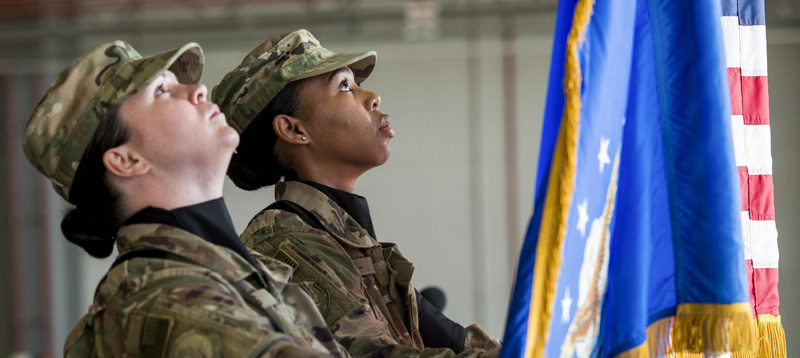Recently, HUD Secretary Marcia Fudge and VA Secretary Denis McDonough issued a joint statement announcing that the two departments are “aligning efforts and joining forces to work towards ending Veteran homelessness.” Each leader pledged to “mobilize the strength of our two departments to do everything in our power to ensure every Veteran has access to safe and stable housing.” They characterized this collaboration as “the first step of a multi-phased whole-of-government effort that will ultimately help us end Veteran homelessness.”
Moreover, they affirmed the strategic pillars of this effort, which included an allegiance to Housing First principles, and a commitment to reaching underserved veterans, among other priorities.
Building on Progress
Our nation’s efforts to end veteran homelessness have represented one of the most important success stories in the mission to end homelessness all together. These efforts began with bipartisan support to ramp up the HUD-Veterans Affairs Supportive Housing (HUD-VASH) program in 2007, followed by the 2013 enactment of the Supportive Services for Veteran Families (SSVF) program – and consequent expansion of quality rapid re-housing for veterans. These were great contributions to the work of ending veteran homelessness, and helped the numbers reduce greatly.
For the past several years, however, this progress has stalled. We must get back on track. The missing component for finishing the job has been top-level leadership, and the joint statement from Secretaries Fudge and McDonough indicate that deficit is coming to an end.
The Keys to Success
A way to think about the resources needed to make progress on any social problem like homelessness is to look at three categories of resources: money, know-how, and leadership. And that definitely holds true for ending veteran homelessness.
Money
The Federal government has a long history of failing to fund programs for homelessness and housing sufficiently to do the job they are supposed to do. Programs for homeless veterans, however, have proven an exception to this.
As noted above, specific programs exist for rapid re-housing and permanent supportive housing for homeless veterans, and these receive funding from Congress that grows every years, and probably are funded at a level where in most places anyone who needs it receives help. Congress last year fixed a big gap by making veterans with “other than honorable” discharges eligible for HUD-VASH (they have always been eligible for SSVF). Rents go up, of course, so funding for these programs will need to grow each year, but money is not what’s holding us back.
Know-How
The understanding about how to end veteran homelessness, both at the level of individual programs and coordinating a region-wide system, is well developed. The Housing First approach has been a mainstay of this work and is firmly established as the way to proceed. Technical assistance is widely available.
Anybody who feels like people in their community don’t in fact know what to do about Veteran homelessness, whether community-wide or how to implement interventions like rapid re-housing or permanent supportive housing, please be in touch!
Leadership.
There is no substitute for leadership in our mission.
That includes leadership at every level: from our system leaders, our local leaders, our civic leaders, and so many other. But it especially includes federal leaders.
First, at the local level. We have dozens of communities now that have achieved a federally recognized virtual end to veteran homelessness. This cautious terminology refers to places where if a veteran loses their housing, they are quickly identified, kept safe, and moved back into other housing. This is not the same as in-real-life ending homelessness, which would require that everyone has housing they can afford so nobody becomes homeless. It is significant, however, a huge improvement over people staying homeless for months and years on end, and shows a homeless system doing its job for veterans.
And there are other localities where the number of homeless veterans hasn’t gone down at all, or has even gone up long-term. Looking at the difference, most people agree that the people running the VA medical centers in the communities that haven’t made progress aren’t paying much attention to the issue. This sets a tone for the community’s entire work on veteran homelessness.
Which brings us to the federal level. Based on the statement released on the 12th, and on testimony from many people who know him and his work during the Obama Administration, Secretary McDonough will do exactly what he says in the joint statement: make this a high priority for VA, and indeed for the entire federal government, working alongside Secretary Fudge. Making sure that every VA Medical Center director understands how the VA can lead at the local level, working with mayors, governors and county officials, as well as business leaders, service providers and others, is a key step.
As Congress considers aggressive measures for funding all homelessness and housing programs, the progress on Veteran homelessness over the past 20 years can provide a hopeful example for what can be achieved. Leadership from everyone is welcome. Let’s work together to make this happen.
We hope activists everywhere will take a look at what their VA Medical Center is doing on the issue, and find ways to improve their involvement.
Know-how, money, and leadership, all at the same time. The Alliance is ready to take advantage of this historic opportunity—and everything I hear from friends and leaders in the field indicates you feel the same.

